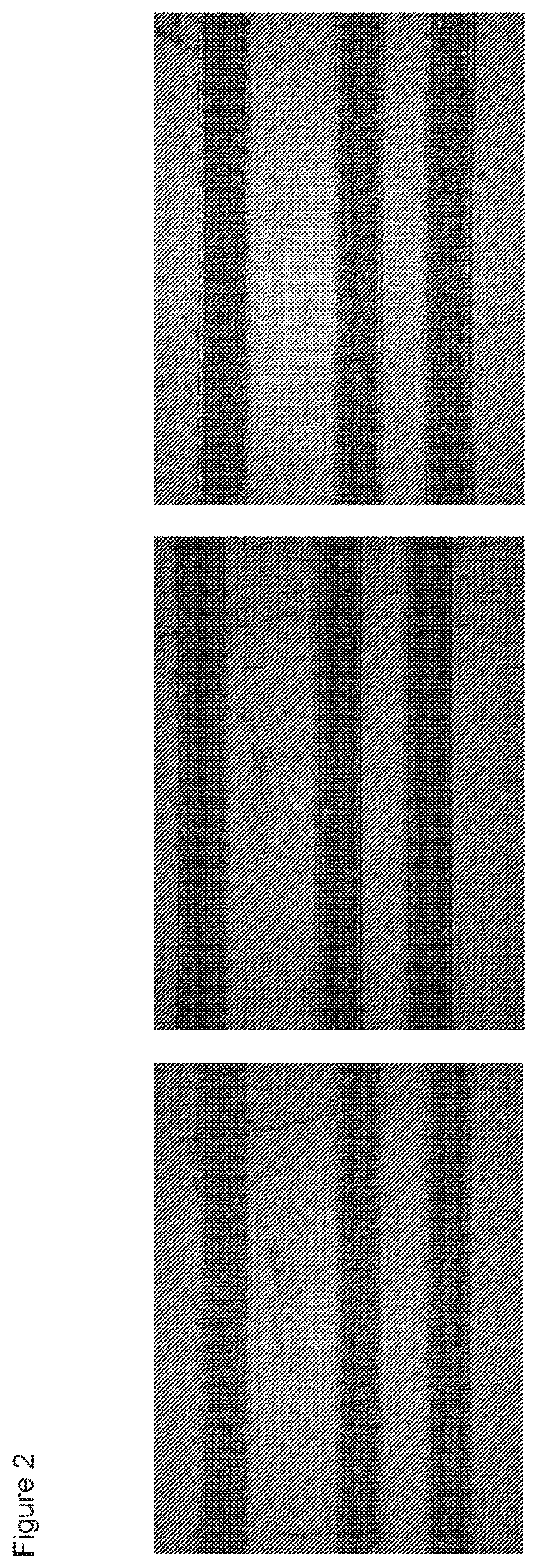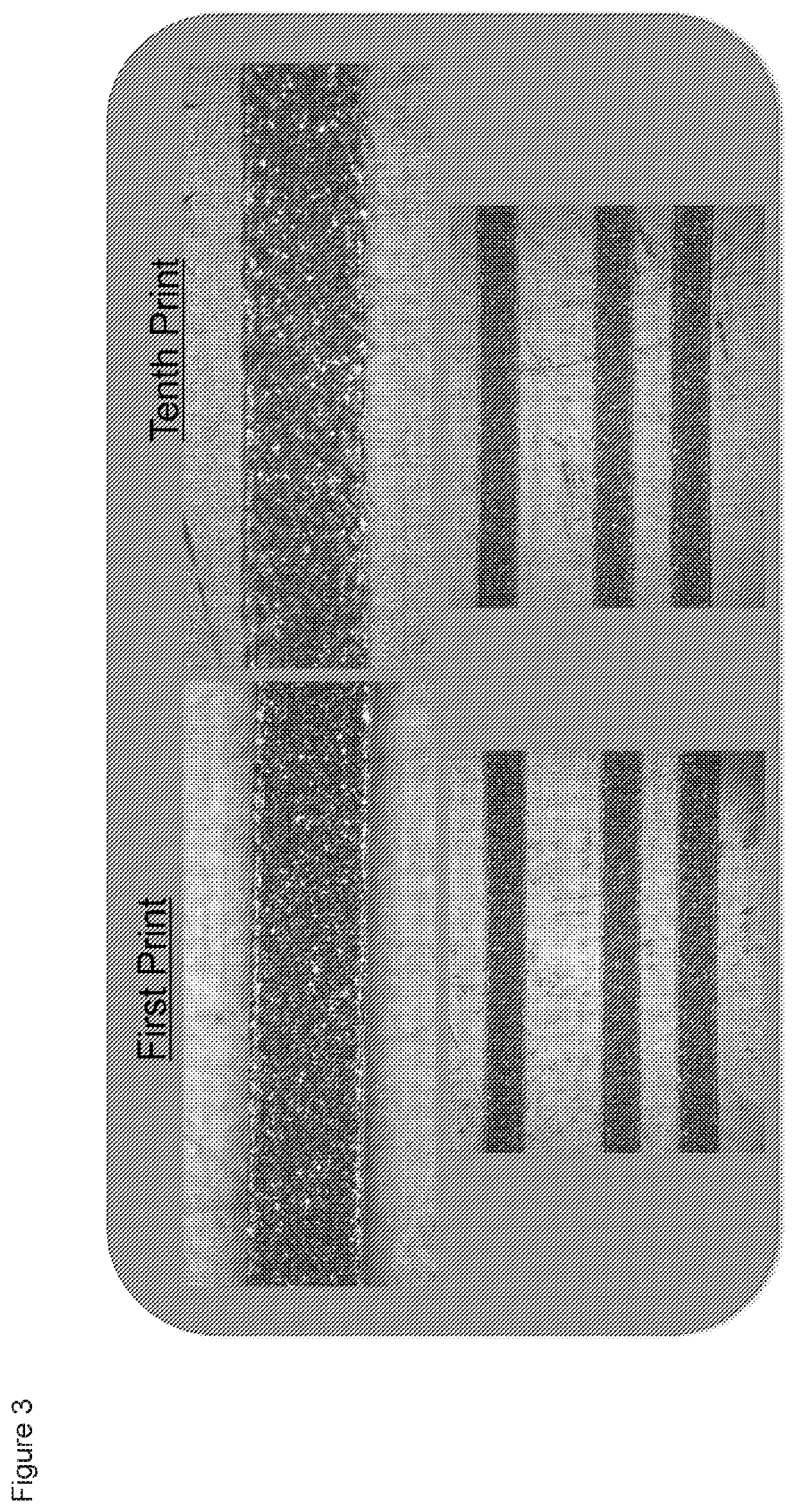Stretchable interconnects for flexible electronic surfaces
a flexible, interconnecting technology, applied in the direction of soldering apparatus, manufacturing tools, printed circuit non-printed electric components association, etc., can solve the problems of insufficient resistance of conductive pastes to environmental effects, inability to adapt to selective structuring of existing conductive pastes, and inability to adapt to selective structuring
- Summary
- Abstract
- Description
- Claims
- Application Information
AI Technical Summary
Benefits of technology
Problems solved by technology
Method used
Image
Examples
example 1
[0115]An organic medium for the composition of the invention was prepared as follows: to 170 grams of magnetically stirred carbitol acetate (boiling point 230° C.) and 40 g downol EPI-1 (from Dow Chemicals) were added 15 grams of Dynapol L411 (a linear aromatic polyester resin). Rheology modifier and adhesion promoter were added to the mixture. The mixture was heated to 60° C. and stirred at this temperature until a clear solution was obtained (after approximately 4 hours). The solution was allowed to cool slowly to ambient temperature.
[0116]To the above mixture, 650 parts by weight (65% by weight) of a flaky silver powder with predominant particle size in the range from about 1 to 20 microns and an average major particle diameter of 5 μm blended and dispersed uniformly by a mixing and grinding machine to obtain an electro conductive paste.
[0117]The viscosity of the resultant paste after 24 hour ambient temperature rest measured about 18,000 centipoise (at 20° C.) on a Brookfield RV...
example 2
[0119]An electro conductive paste was obtained by following the same process as in Example 1 except that following flux composition was used:
[0120]
Ingredients:Part by weight:Silver flakes65Carbitol acetate-solvent18.00Downol-solvent4.00Dynapol L411-binder1.30Setal VS60 (trademark of Nuplex)-08.60binderRheology modifier2.50Adhesion promoter0.60
[0121]This composition contained polyester polyol.
example 3
[0122]An electro conductive paste was obtained by following the same process as in Example 1 except that following flux composition was used:
[0123]
Ag flakes65.00Carbitol acetate18.90Thinner3.2Dynapol 4112.60Setal_US_136_BB_1577.20(Trademark of Nuplex)Rheology modifier3.10
[0124]This composition contained branched polyester and polyamine curing agent
PUM
| Property | Measurement | Unit |
|---|---|---|
| temperature | aaaaa | aaaaa |
| temperature | aaaaa | aaaaa |
| width | aaaaa | aaaaa |
Abstract
Description
Claims
Application Information
 Login to View More
Login to View More - R&D
- Intellectual Property
- Life Sciences
- Materials
- Tech Scout
- Unparalleled Data Quality
- Higher Quality Content
- 60% Fewer Hallucinations
Browse by: Latest US Patents, China's latest patents, Technical Efficacy Thesaurus, Application Domain, Technology Topic, Popular Technical Reports.
© 2025 PatSnap. All rights reserved.Legal|Privacy policy|Modern Slavery Act Transparency Statement|Sitemap|About US| Contact US: help@patsnap.com



